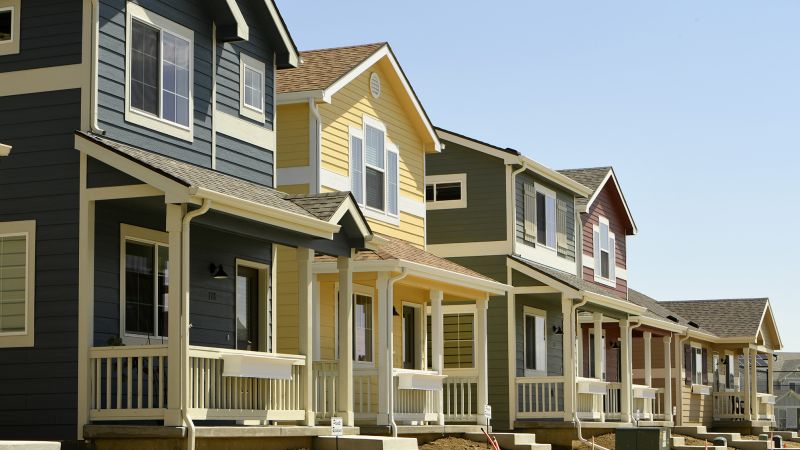Investing in Affordable Housing: Challenges and Rewards
Investing in Affordable Housing: Challenges and Rewards
Investing in affordable housing can be a great way for investors to earn passive income while providing a reasonable place to stay for those with lower incomes. However, while there are several upsides to this investment strategy, it’s important to recognize the challenges and understand how it works. Today, we’ll go over why we need affordable housing, some of the pros and cons, and how to get started with this investment type. So, stick around as we discuss all you need to know about investing in affordable housing.
What Is Affordable Housing?
Affordable housing refers to accessible and affordable housing for individuals with low to moderate incomes. Depending on the housing market and median income, the exact definition of affordable housing may differ. However, the US Department of Housing (HUD) considers housing affordable if individuals or families spend no more than 30% of their income on rent, including utilities.
Why Do We Need Affordable Housing?
Affordable housing is important for several reasons. Not only does it provide housing opportunities for lower-income individuals, but it also can contribute to economic stability. Overall, affordable housing is essential for a healthy, thriving society. Some of the main reasons we need affordable housing include the following.
- Preventing Homelessness
- Economic Stability
- Health and Well-Being
- Crisis Resilience
- Reducing Poverty
Preventing Homelessness
When housing costs are excessively high compared to the median income, individuals and families may struggle to afford a place to live. Unfortunately, this can lead to homelessness or unfavorable living conditions. So, investing in affordable housing can provide more homes to those in need.
Economic Stability
Affordable housing allows individuals and families to allocate more of their income toward other essential needs, like healthcare, education, and nutrition.
In turn, it can contribute to economic stability and less financial stress.
Health and Well-Being
Living in stable, affordable housing positively impacts an individual’s physical and mental health. After all, it provides a safe and secure environment, reducing stress related to unstable or unfavorable living conditions and housing situations.
Crisis Resilience
In times of economic downturns or emergencies, like the COVID-19 pandemic, affordable housing provides a safety net for individuals and families who may face job loss or financial hardship.
Reducing Poverty
Affordable housing plays a large role in poverty reduction by ensuring that housing costs do not take up a large portion of a household’s income. In turn, this frees up resources for other basic needs, like healthcare, food, etc.
Pros and Cons of Investing in Affordable Housing
Like any real estate investment, investing in affordable housing has its fair share of pros and cons. Before looking into this investment type, here are some of the main points to consider.
Rewards of Investing in Affordable Housing
- Steady Demand- There’s typically a consistent demand for affordable housing, as there’s a large percentage of people with limited resources who need housing.
- Highly Profitable- Since there’s so much demand for affordable housing, investors can benefit from consistent monthly rental income. Additionally, some governments pay a percentage of the monthly rent for low-income tenants.
- Government Incentives- Many governments offer incentives and subsidies to encourage the development and maintenance of affordable housing, which can benefit investors financially.
Challenges of Investing in Affordable Housing
- Lower Rental Income- Rental rates for affordable housing are typically lower than other properties on the rental market. Unfortunately, this can lead to lower overall revenue for investors.
- Regulatory Challenges- There may be strict regulations and compliance requirements associated with affordable housing investments, which can add complexity and administrative burden for investors.
- Market Instability- The demand for affordable housing can be influenced by economic conditions, government policies, and demographic shifts, which may affect the investment’s profitability.
How to Invest in Affordable Housing
Investing in affordable housing involves research, financing, and strategic planning. Here are some of the main steps you can take to get started on your investment.
- Market Research and Analysis
- Define Investment Goals
- Locate Affordable Housing Opportunities
- Evaluate Potential Properties
- Secure Financing
- Find Qualified Property Management
Market Research and Analysis
If you’re thinking of investing in affordable housing, it’s crucial to understand the demand in the specific area where you plan to invest. For instance, you’ll want to consider population growth, employment opportunities, and existing housing supply.
Additionally, it helps to familiarize yourself with local zoning laws, building codes, and regulations related to affordable housing. These can significantly impact the feasibility of your investment.
Define Investment Goals
Next, you’ll want to decide how much you want to invest in affordable housing. Setting an investment goal can help guide your search and find financing options. Furthermore, clarify whether you aim for rental income, long-term property appreciation, or a combination of both. This can also influence your property selection and how you’ll manage your investment.
Locate Affordable Housing Opportunities
If you’re considering investing in affordable housing, it helps to connect with other professionals who specialize in that investment type. They can help you find the right properties and give valuable insights about the affordable housing market.
You may consider a few different options. For instance, properties needing renovations may be available at a lower cost, which, with the right improvements, can become affordable housing options.
Additionally, you can look into government-sponsored affordable housing programs, like Low-Income Housing Tax Credits (LIHTC) or Section 8 Housing, which provide incentives for developers and landlords.
Evaluate Potential Properties
Secure Financing
Once you find the right property type, you’ll want to find the right financing for you. So, research different financing options, including traditional mortgages, government-baked loans, or private lenders. Look at factors like interest rates, terms, and down payment requirements during your research. If applicable, see if any grants, subsidies, or tax incentives are available for affordable housing investments in your area.
Find Qualified Property Management
Once you’ve secured an affordable investment property, you’ll want to figure out how to manage it. Decide whether you’ll manage it yourself or hire a property management company in Washington DC, like Bay Property Management Group.
No matter what type of investment property you have, it’s crucial to schedule routine maintenance and repairs to keep everything in working order. Additionally, a well-managed property is key to ensuring the safety and satisfaction of your tenants.
Key Takeaways
There are many ways of generating good returns from real estate. One of them is to invest in multifamily real estate. Multifamily real estate properties are simply properties with multiple rental units, usually numbering two to four.
The main benefit of such types of properties is that they offer a steady flow of rental income since you host multiple tenants. It’s easier to scale your real estate investment portfolio since you buy multiple units at once instead of one property at a time. Additionally, financial services providers know such properties offer steady cash flow, so they provide financing options at favorable terms.
However, there are also a few potential downsides, such as high operational expenses, high startup costs, and more maintenance requirements.
We live it and breath the industry – at SIMM Capital our strategy is to give everyone the chance to build wealth through real estate. We seek the best assets that hold the largest opportunities while delivering in rent growth year over year. We know the business. To see how we can help you with your Real Estate investments talk to an expert and click the link www.simminc.com




Recent comments